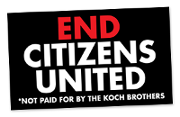Biblio
(1994). Conquering C++ Pointers.
(1988). The Constraints of Corporate Tradition: Doing the Correct Thing Not Just What the Past Dictates.
But when boosting productivity comes to mean in practice nothing more than an efficiency-driven effort to cut costs and do better with line workers what is now being done, we can watch the coral build up before our very eyes. In an earlier environment, the link between old-fashioned, direct labor-based productivity and competitive strength was obvious and immediate. Today, that linkage is more complicated and less certain. Doing the right things is every bit as important as doing things right. Time was, we could think of direct-labor productivity as a pretty fair approximation of competitiveness and be confident we were on the mark. No longer. The proxy does not hold. Forgetful that it was—and is—but a proxy that holds for some circumstances but not all, many of today's managers treat as a living fact what is no more than the hard shell of past experience.
So it is with most of the maps by which managers steer. What was once known to be an artifice, though no less useful for that, gradually loses its air of being an imaginatively constructed thing and, equally gradually, takes on the air of being something real and hard and concrete in its own right." (p. 13)
So it is with most of the maps by which managers steer. What was once known to be an artifice, though no less useful for that, gradually loses its air of being an imaginatively constructed thing and, equally gradually, takes on the air of being something real and hard and concrete in its own right." (p. 13)
(1978). Control your depression.
"Psychological prevention is a much neglected area. There is so much need for giving services to people who are hurting that we do not take the time to prepare those who are not hurting to live life in effective ways. If we did, we might be able to prevent many from becoming casualties. The savings in therapy time and money—not to mention human suffering—could be enormous. Perhaps some day 'psychological impact statements' will be as familiar to our ears as 'environmental impact statements.'"
(2003). Controlling People: How to Recognize, Understand, and Deal with People Who Try to Control You.
"Other people's definitions of us are not just absurd—if unchallenged, they erect prison walls around us. As they rise higher, the light of awareness fades. The world darkens. We lose freedom, safety, confidence, conviction, and sometimes ourselves." (p. 77)
(1994). Coping with Difficult Bosses.
"There are certainly times when honest spontaneity is the key to improved human relationships, but while you are being harpooned by a hostile boss is not one of those times. It is then you need to do what actors do—communicate emotions you do not feel." (p. 20)
(1997). Core Java 1.1 Volume 2.
(1999). Core Java 2 : Volume 1 Fundamentals.
(1991). The Corporate Negaholic: How to Deal Successfully With Negative Colleagues, Managers and Corporations.
"The alternative action was to look at the inequities and the resentments and find solutions which would create a win-win outcome. Unless everyone wins, no one really wins." (p. 91)
(1993). Crazy Bosses: Spotting Them, Serving Them, Surviving Them.
"Today, American workers exist in the most primitive form of group, one that is tradition-free and free of loyalty. Such an environment generates tremendous fear in people, fear of loss, of death, of dissolution and shame. Fear that drives people together. Fear that keeps people apart. It is a fear produced by the incessant demand for short-term results and the feeling of danger supplied by a variety of villians. And it is not irrational. It is real. It is sane." (p. 94)
(2006). CrazyBusy : overstretched, overbooked, and about to snap : strategies for coping in a world gone ADD.
"Our task now is to learn how to use the technology we've invented, rather than allow it to use us, so that it improves our human connections, and does not replace them."
(2002). Creating Sustainable Work Systems.
If one is to believe history, intensity of work has been a central issue in management science ever since the start of industrialization and a problematic one at that, as it captures the essence of the antagonism between the person who does the work and the person who wants it done; sometimes formulated as a conflict between capital and labour, inherent in the capitalistic industrial system. This perspective does not indicate many remedies apart from a proletarian revolution—still there would be conflicting interest." (p. 15)
(1989). Creative Organization Theory.
"As we all know, bureaucracies are supposed to operate 'by the rules.' They are places where individual initiative, enterprise, and creativity are supposed to take second place—if they are permitted at all!—to the policies and procedures that have been defined or authorized by those in charge of the organization as a whole.
Weber observed that the bureaucratic approach to organization mechanized the process of administration, exactly as machines had routinized production in industry. And his writings make frequent reference to how this process of mechanization squeezes out the human dimension." (p. 49)
(1993). The Creative Spirit.
"'Love is not a word people talk about easily', says Larry Wilson, 'Yet, increasingly, we're seeing that people are wanting to know that somebody cares about them, that they are not just seen as some interchangeable part. Real leadership is about demonstrating that your intention is to care for people and support their growth.'" (p. 139)
(2002). Creativity.
Express Exec.
"Many of the most important tasks related to shaping and fostering ideas are not a 'mandated' part of a manager's role. The experimentation and play that is so important to creativity will not occur unless managers match what they say with what they and the organization do to reward and recognize risk taking, whether or not it is successful." (p. 85)
(1986). Creativity in business.
"People who don't understand where creatively successful individuals get their confidence and risk-taking ability don't know what you know about the devastating VOJ (Voice of Judgement). Judgement creates fear and destroys confidence. Judgement shows any alternative to be fraught with risk. Judgement says no to experimentation, discovery, trail-blazing. Judgement says 'Stay right here and like it.'" (p. 56)
(Submitted). Creativity in Your Professional Life.
"When you find yourself stuck on some problem or issue, taking a trip or simply immersing in a new environment often brings up synchronistic solutions. The trouble is, we can't mentally 'will' ourselves to go to this new place. Our minds know how to analyze, compartmentalize and dissect; they know how to churn things around in circles. They do not know how to enter the imaginal."
(1998). The Critical 14 Years Of Your Professional Life.
"What are the bosses' strengths and weaknesses?
We all have them. Usually, our weaknesses outnumber our strengths. When you do a strengths/weaknesses 'audit' of the boss, be prepared for the weakness column to extend beyond the strengths. Once I got savvy about the world of bosses, I considered it a major strength that the executive simply was breathing. The higher you put your standards for how bosses should act, the harder you're going to fall when a particular boss doesn't measure up. Remember breathing—it's a major strength." (p. 60)
We all have them. Usually, our weaknesses outnumber our strengths. When you do a strengths/weaknesses 'audit' of the boss, be prepared for the weakness column to extend beyond the strengths. Once I got savvy about the world of bosses, I considered it a major strength that the executive simply was breathing. The higher you put your standards for how bosses should act, the harder you're going to fall when a particular boss doesn't measure up. Remember breathing—it's a major strength." (p. 60)
(1998). Critical SHIFT: The Future of Quality in Organizational Performance.
"Sometimes the search for a position in your organization that matches your desires leaves you empty-handed. In this situation you must make the decision to leave the organization or stay and create a new position if you believe it will add value. If you decide to stay, do not be deterred by those who tell you it will be impossible to create a new role. Our parents taught us 'Where there's a will, there's a way.' "
(C)2014 CC-BY-NC 3.0, workcreatively.org











 ]
]